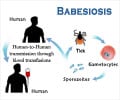Scientists may soon be equipped with a way to block the spread of malaria, as a team of researchers have for the first time revealed the means whereby most deadly malaria parasites
A team of researchers recently declared the means through which most deadly malarial parasites can be detected and killed by their very own carrier-mosquitoes. Such a method, the first of its kind in history, could very well spell the end for the spread of malaria.
According to background information in a research article published in the journal Science Express, mosquitoes become infected with malaria when they feed on the blood of an infected person.Young malaria parasites grow and develop inside the mosquito for two weeks, and new human infections occur when the parasites are "injected" with the insect's saliva during the mosquito's next blood meal.
However, say The Imperial College London researchers behind the new discovery, most of the malaria parasites are killed by the mosquito's immune system as soon as they enter the insect's bloodstream, with only one or two slipping through the net and going on to divide, multiply, and infect people.
The researchers say that their study shows exactly how the mosquito's immune system kicks in to kill 80 to 90 percent of the parasites.
They have found that a pair of proteins belonging to the mosquito's infection surveillance system, called LRIM1 and APL1C, detect the parasites.
The two proteins later activate a third protein in the mosquito's blood called TEP1, which seeks out the parasitic invader, binds to its surface, and orchestrates its destruction by punching holes in its cell membrane.
Advertisement
"Mosquitoes are known as the 'bad guys' that spread malaria, but these insects are unwilling carriers of the disease, whose immune systems try to fight it, just like ours do. Now that we know exactly how their immune system attacks malaria parasites, we need to work out how a small number of parasites manage to evade detection by this system. Only a few manage to get past the mosquito's defences, but that's all that's needed for the disease to be transmitted to humans," says Dr. George Christophides from Imperial's Department of Life Sciences.
Advertisement
The research was carried out in the laboratory using a model parasite, which causes malaria in rodents.
The researchers are of the opinion that other proteins belonging to the same family as LRIM1 and APL1C may also play a role in defence against other diseases like dengue and yellow fever, filariasis and various encephalitides.
They are presently studying how these proteins function during mosquito infection with dangerous human pathogens.
Source-ANI
TAN/L











